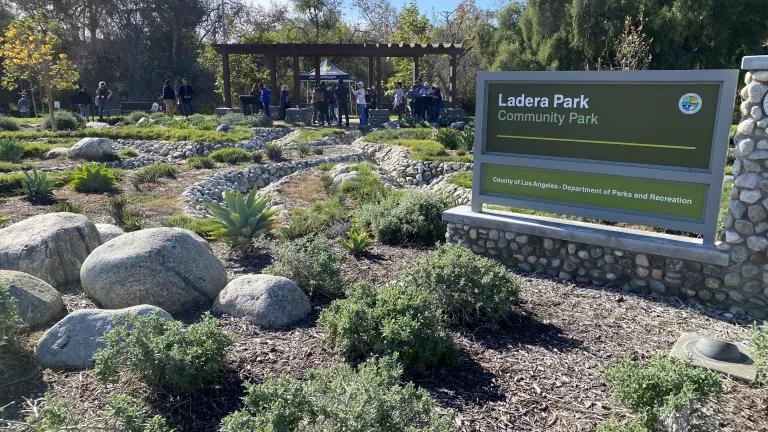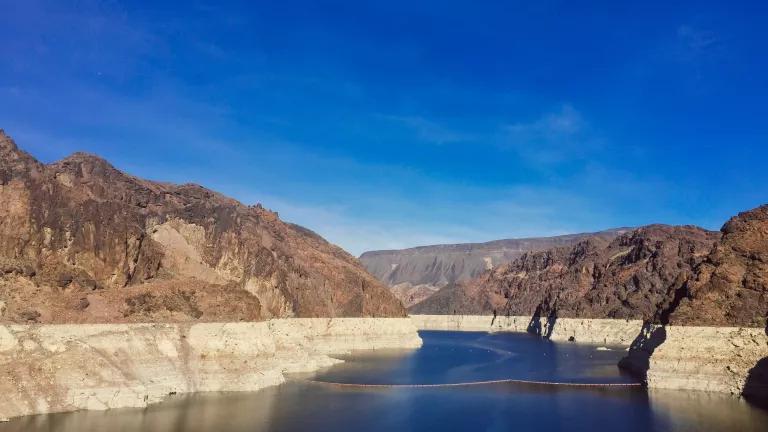Comfortable Cities Ignore State Water Regs During Drought
More than a dozen City Hall leaders violate California's water reporting requirements.
This is a story within a story. The big picture is that California and much of the West is once again in extreme drought. From 2014 to 2017, California experienced its worst drought since statehood. Yet now, barely five years later, 97 percent of the state is experiencing severe drought again, and portions of Southern California that depend on the shriveled supplies of the State Water Project are under major curtailment orders. What’s more, the outlook for the Colorado River—Southern California’s ace in the hole—is so bleak that federal managers are soon likely to order reductions in water withdrawals from this critical supply as well. The climate of the future has arrived.
In the face of worsening drought, we’ve pointed out a wide set of measures that State and local governments, water utilities, and water customers can take to use drinking water more efficiently and better prepare for a warmer and drier future. See nine recommendations we made here last August.
Yet in many of Southern California’s affluent, hip, and otherwise comfortable communities that depend on water from far-away sources, City Hall leaders continue to shrug off their responsibility to implement one of the state’s oldest water-saving statutes, the Water Conservation in Landscaping Act of 1992. And state regulators have not lifted a finger to hold them to account
In a year without drought restrictions, about half of California’s drinking water gets used outdoors, mostly for landscape irrigation. To help tame this enormous demand for water, the 1992 landscaping law and its implementing regulations require new irrigated landscapes to be designed from the start to use water efficiently, and for cities to report each year on the stringency of local requirements and the amount of irrigated area approved in new building permits.
Yet fewer than half of California’ cities and counties even bother to file their annual reports on the permits they issue for irrigated landscapes. In the past, NRDC has called out hundreds of California’s cities and counties that have failed to comply with state landscape regulations, and in some cases taken such jurisdictions to court. For further background on the landscaping regs, and a closer look at our prior legal actions, click here and here. Now once again, we’re calling for action and accountability for local officials that ignore these water-saving regulations.
Naming names
This week, NRDC sent letters to fourteen cities in Southern California, pointing out their failure to comply with state regulations requiring an annual report on the permits they issued for newly installed irrigated landscapes. (For the text of these identical letters, click here.) Based on information posted by the Department of Water Resources, each of these cities has failed to file an annual report for both 2020 and 2021 permit activity, and several of them have missing reports going back even further.
The fourteen cities in our sample of offenders include the following:
Los Angeles County
- Malibu
- Palos Verdes Estates
- Santa Clarita
- West Hollywood
Orange County
- Anaheim
- Huntington Beach
- Laguna Beach
- Yorba Linda
Riverside County
- Rancho Mirage
San Diego County
- Encinitas
- Oceanside
- Solana Beach
Ventura County
- Moorpark
- Oxnard
These cities all depend on imported water, and all have been actively issuing building permits for new residential construction accompanied by irrigated landscaping. Taken together, these cities have issued building permits during 2020 and 2021 for over 3,300 single-family homes and over 3,200 dwelling units in multifamily buildings, but the scope and stringency of their requirements for water-efficient landscaping remains unknown.
The information in their missing reports includes the number of new irrigated landscapes, the stringency of the efficiency standards being applied, the method of verification of compliance, and the total square footage of newly irrigated area – all valuable information for water supply planning, Granted, the failures we document here are procedural violations, and may not indicate that the substantive elements of state landscape regulations are not being enforced. But we don’t know that, precisely because they have not reported on their permit programs as required. It should also be noted that filing the state’s one-page electronic form through DWR’s web portal is the easiest part of the regulations to implement. If a city can’t file this report, what assurance is there that the more challenging tasks of plan review and compliance inspections are getting done?
We’d be glad to learn that we’re mistaken about any one of these cities—that they really have been implementing state landscape regulations and actually have filed timely annual reports that somehow we missed. But absent an error on our part, the focus needs to be on the unforced errors of a group of city officials whose sense of complacency, privilege, or entitlement—or some combination of the three—leads them to believe that state laws and regulations to prevent the squandering of drinking water are not to be bothered with.
The Water Conservation in Landscaping Act was adopted 30 years ago. The current regulations to implement the act were adopted seven years ago. DWR has sent pleasantly worded reminder notices to every city and county in California. These policies are not new, and these procedures are not new. What is new is the accumulation of climate stress on multiple sources of imported water simultaneously—imported water that has supported Southern California for nearly a century. There is simply no time left for inattention or carelessness toward our collective responsibility to ensure that drinking water is not wasted. These fourteen well-resourced cities should be showing the way, instead of bringing up the rear.




